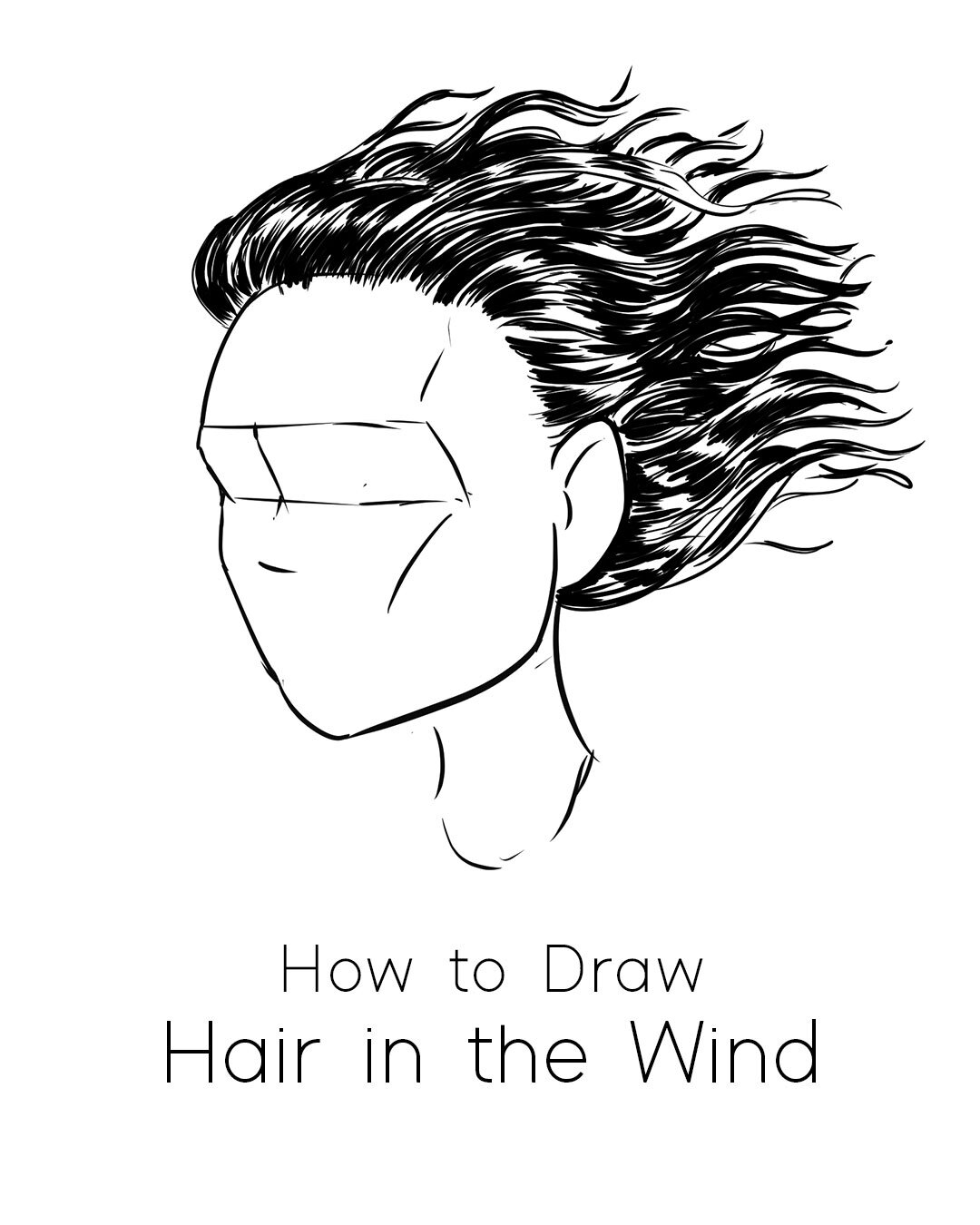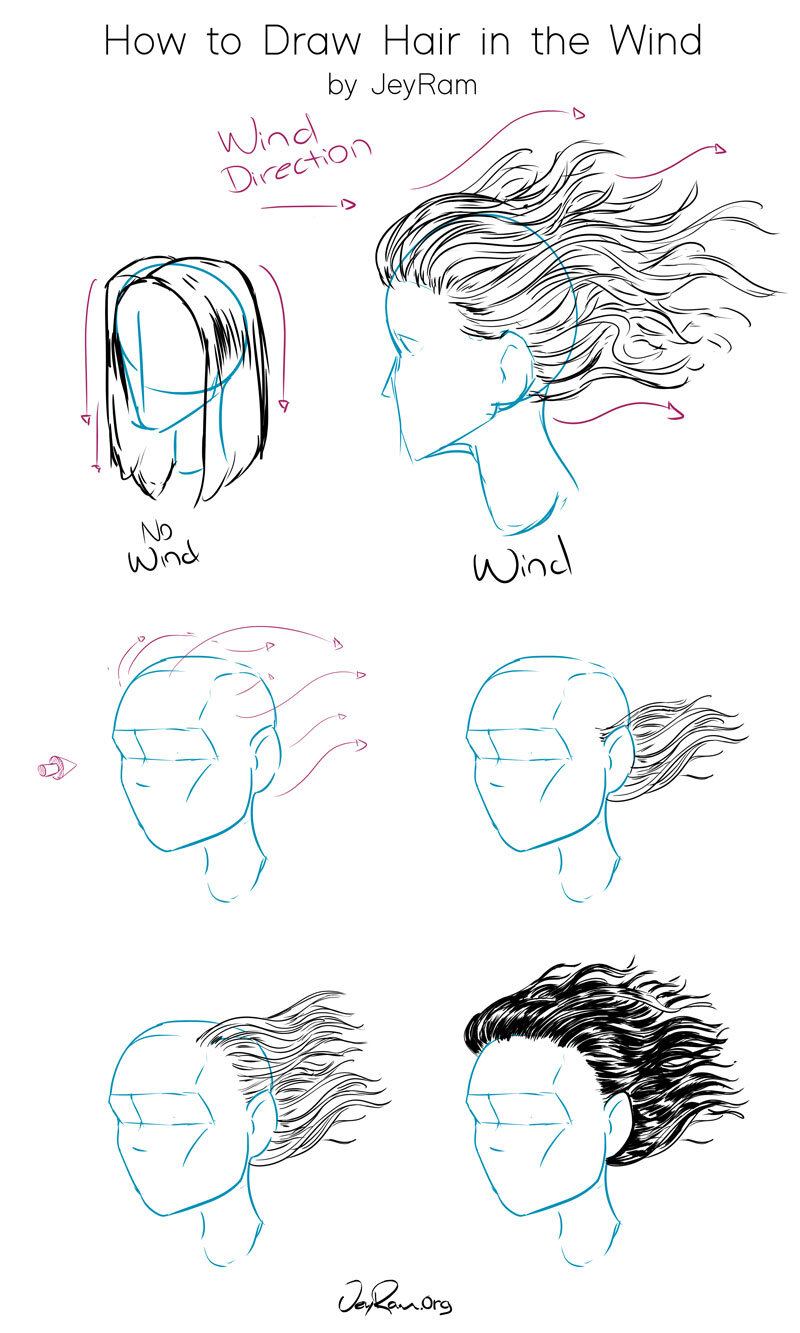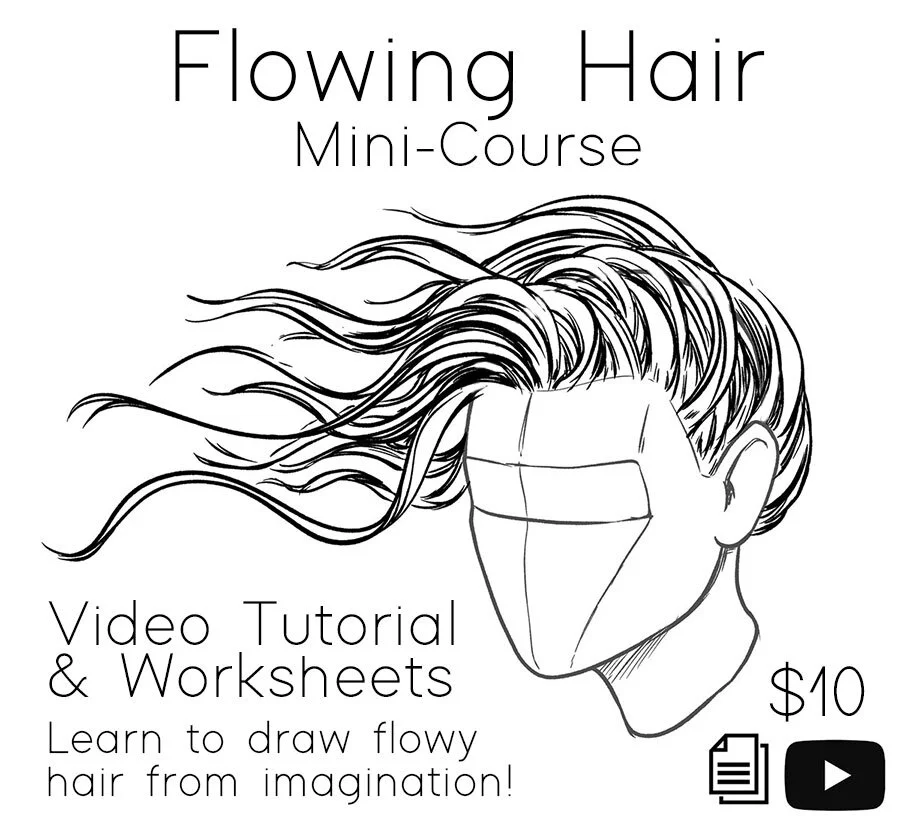How to Draw Hair Blowing in the Wind
Step 1. Head shape
We won’t be going over how to draw the head shape in this tutorial but I have a free tutorial with worksheets available here if you want help with this step
Step 2. Wind Direction
Draw some light guidelines (or a thumbnail in the corner of your drawing) that define the direction and flow of the hair. The hair will flow in the direction of the wind, so if you want the wind blowing from left to right as I have done in the examples, then the direction lines will follow the same way.
There are many directions you can take the hair, you can have the wind blowing from the bottom, which would occur if someone was jumping down, or from the top which would happen if a person was flying upwards. Make sure to give your direction lines some curves so that the hair doesn’t appear too stiff.
Step 3. Strands
Start adding strands of hair that follow the direction lines of the last step. Make sure to draw the large forms from thick at the base and thin at the ends. Pay attention to the overall design of the hair, where are the strands longer and shorter, how are the strands attaching to the head in a natural way..etc.
Keep adding strands until the hairstyle is complete. I recommend taking a step back and see if you are satisfied with how the hair turned out. It’s much easier to change the hair at this stage than when the shading is already in place. This is why I am a big fan of using guidelines and structure to build, you can save a lot of time by having a clear idea of where the drawing is headed.
Step 4. Render
Add rendering (shading) and complete out the hairstyle. If you are interested in more guidance on how to shade in this style, consider checking out the hair drawing mini-course where we go through some simple exercises to help us develop our rendering skills.
Erase away any guidelines and refine the linework until you are happy with the drawing! ^.^ Make sure to practice lots because this doesn’t come naturally to anyone
Hair Drawing Tips
Tip #1. Curve Variation
When drawing hair I recommend using variations in the curves of the hair to give it a more natural feeling. I tend to keep the curves larger towards the top (closer to the roots) and then smaller as the hair thins out. This happens because the hair tends to have more strands towards the base so there is more hair that needs to bend to create the initial curves.
Tip #2. Thick to Thin
Draw the chunks of hair thicker towards the base and then thinner towards the ends. This is just the result of how hair grows. Make sure to give your hair some volume by using these 3D forms.
Tip #3. Loose Strands
Once you have your large forms in place, add some loose strands of hair towards the end of the hair to give the hair more elegance. You can also add loose strands towards point of interest like hair ties and close to the ears.
I would recommend writing these 3 points down and then practicing them individually until they become second nature. If you look at your favorite portrait drawings with beautiful hair, you are likely to find that the artist has utilized these methods. There are obviously exceptions to these, but for most hairstyles, this works.
This mini course is designed to help you learn how to draw flowing hair from imagination. We go through a series of drawing exercises to help you develop your drawing skills so that you will be able to draw hair with ease. The worksheets provide a very clear and concise way of practicing that will get you fast results. Let’s draw some flowy hair together!
Learn how to draw hair with this 14-page workbook that will walk you through the stages of understanding how to draw any hairstyles.
Learning to draw can be frustrating and intimidating but with these worksheets, you will have a clear path forward and exercises to help you take things one step at a time!
This workbook is also included in the Fundamentals Bundle that you can grab here if you are interested in getting the whole collection!
In this 24 page workbook we will practice drawing 23 different hairstyles at 6 different angles each (total of 138 heads), I have found that this method of practice is great for developing the skills necessary to draw a variety of hairstyles :D
This is also a great drawing activity that is low pressure and straight forwards, it is much easier to draw with direct reference in front of you so its a good way to relax and have some fun drawing!
This workbook is also included in the Fundamentals Bundle that you can grab here if you are interested in getting the whole collection at a discount!






